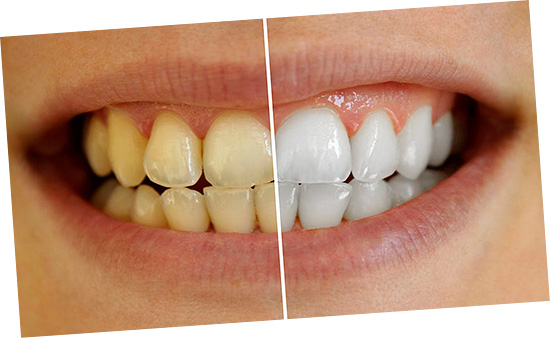
Next you will find out:
- How can whiten teeth at home without serious harm to enamel;
- What is the clarification of enamel is fundamentally different from bleaching;
- What methods of home lightening and whitening are the most effective, and what kind of damage does tooth enamel cause?
- Somewhat frankly harmful, as well as quite safe folk teeth whitening methods;
- You will also learn how to compensate for the harmful effects on the tooth enamel of bleaching agents, if you decide to use them.
Due to the rapid development of dentistry today, many techniques and tools for effective and relatively safe whitening of tooth enamel have appeared. In this case, all such ways to make a smile whiter can be divided into professional and home.
Professional or, alternatively, desk (at the dentist's) teeth whitening is, as a rule, quite an expensive and effective procedure, although it is usually not possible to carry out it without any harm to enamel.Considering that people, generally speaking, do not like to go to the dentist, the reasonable question arises: is it possible to somehow whiten teeth at home and without harm to enamel?
And here the most different ways and means for home teeth whitening come to the fore: these are all kinds of whitening pencils, strips and caps with a gel based on hydrogen peroxide, as well as special whitening toothpastes, rinses and some specific folk remedies that allow you to make a smile whiter. Interestingly, some methods of teeth whitening at home quite well combine the specific features of room teeth whitening with ease of use - and this is no longer just grandma's recipes, but a simplified version of the application of modern dental technology.

But, of course, not all methods of home lightening and teeth whitening can be carried out without harm to enamel. Which of them are the most effective, and which are almost useless, which are relatively safe, and which are absolutely not worth using - we will continue to talk about all this in more detail.
But first, let's clarify an important nuance regarding the fundamental difference between lightening and whitening tooth enamel ...
The difference between lightening and bleaching enamel
Before you begin to select the appropriate means for teeth whitening, it is important to understand the difference between whitening and lightening of enamel.
During bleaching, there is a chemical effect on the deep structures of the enamel with the destruction of coloring pigments accumulated over a long time. The reasons for such staining can be bad and well-established habits (smoking, chewing tobacco, regular wine consumption during meals, excessive coffee cravings, strong tea, etc.).
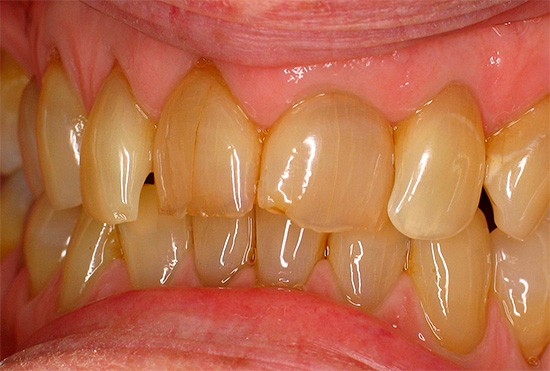
The whitening procedure involves exposing the tooth enamel to highly aggressive chemicals: for example, orthophosphoric acid and hydrogen peroxide in high concentration can not only dissolve organic pigments inside the surface layer of enamel, but also seriously damage its mineral structure as a whole, which leads to unpleasant side effects.
Unlike bleaching, enamel brightening is the improvement of its color characteristics only from the surface.This happens due to cleansing the surface of the teeth from soft and hard (less often) plaque, which can give the teeth any shades of brown, up to black color.
On a note
If the tooth enamel from nature has a dark shade or yellow, then it is quite obvious that lightening does not help give a smile Hollywood whiteness, and there is no point in putting hope, for example, on the use of abrasive whitening pastes. In such cases, even chemical bleaching does not always give a well-pronounced effect, but the harm is quite capable of inflicting, especially with unhealthy burden, by all means whiten the yellow enamel by nature.
Homemade ways to lighten the enamel: choose the best
Perhaps you should immediately caution against the use of hard vintage methods of lightening tooth enamel - such as rubbing teeth with clay, ash and charcoal. In most cases, nothing but harm, such experiments will not bring.
We note the modern ways of home enamel brightening:
- Whitening toothpastes;
- Bleaching brushes (yes, there are such);
- Whitening mouthwashes.
The most popular and widely advertised way of "bleaching" (more correctly - lightening) of teeth at home is the use of whitening toothpastes.

There are many fans of this method of lightening tooth enamel, and the logic here is simple. A large number of people regularly consume strong tea, coffee, wine and other staining stains, as well as smoke. As a result, over time, a colored (pigmented) plaque appears on the surface of the teeth, and a person has natural thoughts to somehow remove it in order to restore its whiteness to his smile.
It is for this purpose that whitening toothpastes are intended, whose action is most often based on the abrasive abrasion of pigmented plaque from the enamel surface. The more abrasive the paste, the more effective it will be to wipe off the plaque, often with enamel.
It is interesting
Each toothpaste has its own abrasiveness index - the so-called controlled abrasive index RDA. The higher its value, the "tougher" the paste erases plaque. For example, for sensitive teeth it is recommended to use pastes with abrasiveness not higher than 25 RDA, children's pastes from 25 to 50 RDA, for daily use - usually about 75 RDA. Whitening toothpastes can have abrasivity at the level of 150-200 RDA.
If you have sensitive teeth and weak enamel (erosion, wedge-shaped defects), then it is better not to even try to use highly abrasive whitening toothpastes - so the problems with the painful sensitivity of the teeth only worsen many times. Benefit among whitening pastes, there are those that are characterized by medium and low abrasivity.


The use of whitening toothpaste, generally speaking, is recommended only after consulting a specialist. But it has already happened that few people will go to the dentist before using this paste, so just take a note of a couple of tips that will help not to hurt your teeth too much in the pursuit of snow-white enamel:
- Do not use abrasive whitening paste too often, they are not intended for daily use. It often happens that a person simply buys a tube of pasta, which attracted the promise to return teeth to whiteness, and uses it twice a day until it ends. So, you can “earn” yourself the so-called non-carious defects in the cervical area of the tooth in the form of erosions and wedge-shaped defects, as well as increased non-sensitive tooth sensitivity from various irritants (cold, hot, sour, etc.);
- If during the application of whitening toothpaste enamel began to react painfully to stimuli - do not torture yourself, and go to a regular paste. This is not the case when beauty requires sacrifice;
- Do not give whitening paste to children - you do not want the child to erase the loose enamel on the milk teeth with a paste with 200 RDA? ..
Now a few words about whitening toothbrushes.
Not everyone knows that there are toothbrushes with a so-called "whitening effect." For example, the following types of bristles of such brushes are distinguished:
- The bristles have a special rubber coating;
- Contain activated carbon;
- They contain calcium carbonate crystals.
The photo below shows an example of a R.O.C.S whitening toothbrush. with calcium carbonate crystals:
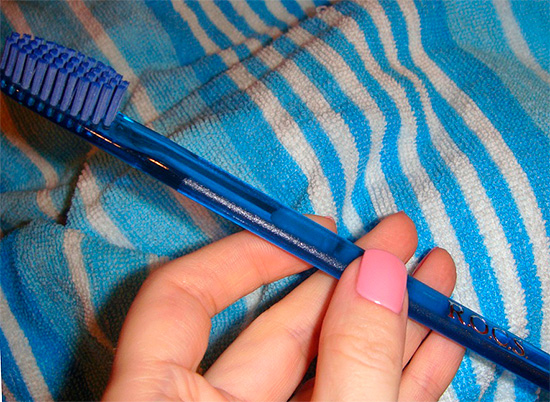
Each of these brushes has certain individual features, but the task for all is about the same: how to remove plaque from the enamel surface as efficiently as possible without causing significant damage to it. In other words, manufacturers offer a quick cleansing of enamel from dark scurf due to a slight scratching effect of bristles (for activated carbon brushes, it is also stated that the odor is eliminated due to the absorbing properties of coal, but this is largely a marketing move).
A positive feature of whitening toothbrushes is that it is possible in a short time at home to clean the enamel from soft and hard patina, which gives the teeth a yellow (dark) shade.
Minuses:
- With prolonged use (especially with some whitening pastes) it is possible to damage the enamel by abrading it with the appearance of increased sensitivity;
- Studies by independent experts have shown that most of the whitening toothbrushes on the hygiene products on the market today do not have significant advantages over a conventional toothbrush with the same degree of stiffness of the bristles. And the emergence of positive results and feedback is often due to the fact that the so-called “special” toothbrush a person begins to brush his teeth more consciously and carefully, controlling the result.
Feedback:
“I by my nature love all sorts of experiments and various new things, dryuchki. For example, a couple of weeks ago I bought myself a whitening ROCS whitening toothbrush with calcium carbonate crystals. The company beats the fact that the brush has a special polymer coating of bristles with included CaCO3 crystals.Once again, I was convinced that it was not happiness that was in the brush, but in the ability to properly and thoroughly brush my teeth, and still correctly select toothpaste. With the new brush, with the old one - there is no difference at all. In general, girls, choose a good whitening paste and any normal brush, then your teeth will be fine. ”
Marina, St. Petersburg
It is worth mentioning the so-called whitening mouth rinses. In this case, the following questions are quite reasonable:
- Can a mouthwash be a means for teeth whitening?
- If so, in what time will this whitening occur?
- If bleaching occurs, is the enamel whitened in depth and does it cause any harm?
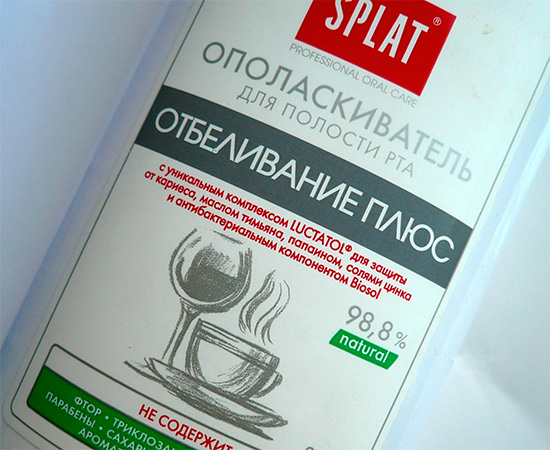

So, the principle of operation of most bleaching rinses is based on two main effects:
- Removal (including dissolution) of plaque from the enamel surface due to surfactants and enzymes. For example, papain and bromelain can be used as enzymes that can cleave the protein basis of dental plaque;
- As well as the actual whitening effect due to peroxide compounds that release active oxygen during chemical reactions (for example, sodium perborate may be included in the rinse aid).
It should be noted that without the use of high-quality toothpaste and brushes, the use of rinses, even bleaching, will affect the whiteness of a smile in the most minimal way, or will have no effect at all. A very low concentration of sodium perborate is generally similar to the marketing pitch: it seems like we can talk about active oxygen and chemical bleaching of enamel to a certain depth, although in practice, with such a low concentration of peroxides and with such a relatively high pH, there is practically no bleaching effect.
So quick whitening from the rinse should not wait, and the main effect will have a whitening toothpaste.
But the rinse due to mineralizing components can reduce the damage done to enamels by abrasives that make up the paste. In other words: they wanted to whiten their teeth, but in the end it turned out to strengthen the enamel, having received the anti-caries effect, as well as good breath freshening.
Feedback
“Recently I bought a Global White bleach rinser with perborate. The first association that has arisen in the head is like in a wash: active oxygen whitens not only the linen, but also the enamel of the teeth. Laugh laugh, but for three weeks I used this tool. From the good, what I can say, is the refreshing effect, which lasts about 2-3 hours. Colleagues even noticed a pleasant smell from the mouth, but teeth whitening for three weeks did not even show up ... "
Svetlana, Moscow
Chemical whitening of tooth enamel at home
Among the currently used chemical household bleaching products, the first places in popularity are:
- Whitening strips;
- Whitening pencils;
- Standard bleaching caps (grooves).
Let's start with the strips and see if they can be used to whiten teeth at home without harm to enamel. In general, these bleaching agents are strips of polyethylene with a special gel containing hydrogen peroxide and auxiliary substances.
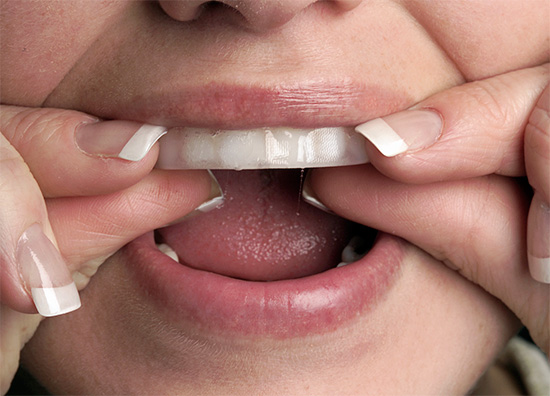
The idea is that hydrogen peroxide is in contact with the enamel of the tooth is activated with the release of active oxygen - a strong oxidant.In the process of its penetration deep into the enamel, the destruction of organic pigments occurs, which, in fact, give the enamel a dark color. So everything looks ideal.
Of course, such household chemical teeth whitening is not complete without damage to the mineral structure of the enamel. The severity of the negative effect of the whitening strips is proportional to the concentration of active ingredients, the exposure time of the strips on the teeth and the frequency of their repeated use. For many people, the painful sensitivity of the enamel appears after a single use of the strips, but they stubbornly endure and carry out the procedure many times, inflicting more and more harm to the tooth enamel.
To achieve a real whitening effect on several tones with the help of whitening strips at home is really possible in many cases. The question is - at what cost? .. If used improperly, there is a risk of not only causing significant damage to the enamel due to its demineralization, but also chemical burns of the gums.
Example
A person incorrectly stuck a whitening strip, suffers a long burning sensation, believing that this is normal and should be so.Then removes the strip, and with it goes a continuous flap and a piece of gums, necrotic hydrogen peroxide. Such cases are.
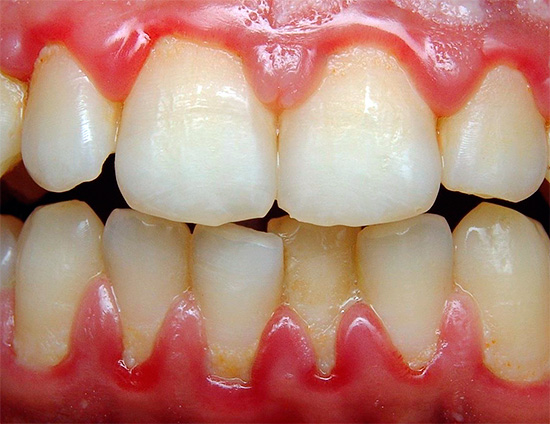
However, if you properly use certified whitening strips, following the instructions, and in parallel apply mineralizing enamel products (paste with fluorine, calcium glycerophosphate, calcium citrate), you can get a whitening effect without excessive harm to your teeth.
Feedback
“I have long wanted to have the same white teeth as that of my girlfriend, so I decided to order whitening strips from China for a sample in group purchases. On the first day, out of the required 20 minutes, I was able to hold out only 7, since such abundant salivation began that I began to swallow constantly. As soon as there was nausea, I stopped this business. Teeth broke a little, but quickly passed.
On the second day, I mastered 15 minutes and saw a strange effect: white stripes on the teeth, where the strip had more contact with the enamel. True, after a couple of hours everything was equal. About 6-7 days I still pokleila, but then, due to personal circumstances, I was forced to temporarily stop bleaching.A month later, I resumed the course, and after 5 days, a terrible thing happened: my teeth began to break almost from everything, my gums became sore, and my mouth itched as if it had bitten wasps. I couldn’t eat cold or hot, I couldn’t eat and even breathe the air was terribly painful.
A friend told me that I foolishly destroyed my enamel, advised the gel to restore it. It helped a little, but I plan to run to the dentist for explanations the other day ... ”
Daria, Kirov
Whitening pencils. The principle of their work is similar to the action of the whitening strips, the difference lies only in the method of application. A pencil is, in fact, a small tube with a special gel and brush, with which this gel is applied to the teeth in the smile zone. Then you need to have some time to smile and wait until the chemical reaction takes place.
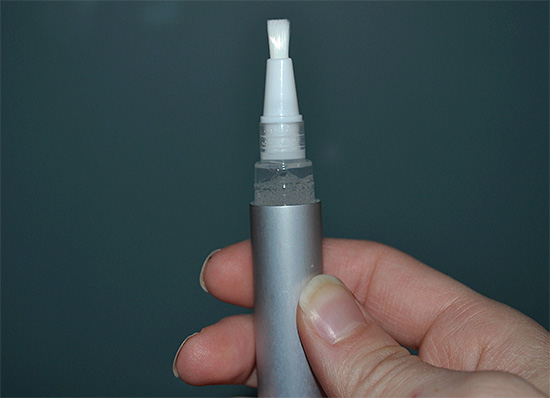
Bleaching pencils can really give the effect of chemical bleaching after prolonged use, but even certified and approved products can cause the same side effects as strips. Particularly should beware of fakes from China, which at best do not contain the necessary concentrations of peroxide, and at worst - contain questionable components that cause additional damage to enamel.
It is worth mentioning the standard bleaching caps or grooves, which today are also quite popular in home teeth whitening. They are sold with a set of gels in syringes, sometimes with an additional activator — ultraviolet light-emitting diodes (ultraviolet light is used by analogy with desk photo-whitening of the teeth to increase the effectiveness of the procedure).
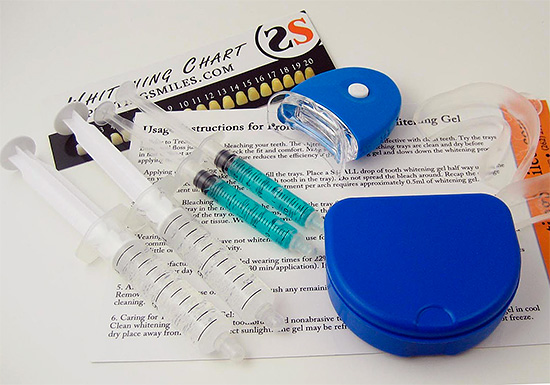
Bleaching caps are perhaps the most dubious means of safety for enamel and oral mucosa. The fact is that even legal bleaching caps cannot boast of safety in use, since each person has strictly individual characteristics of the bite, the location and shape of the teeth. Therefore, there is always a high risk that the gel from the kapa can spread over the mucous, causing serious burns.
Chinese fakes often have only a minimal whitening effect due to the lack of the required concentrations of bleaching components. Highlighting the gel with violet LEDs creates a more psychological effect, rather than actually activating the gel components.
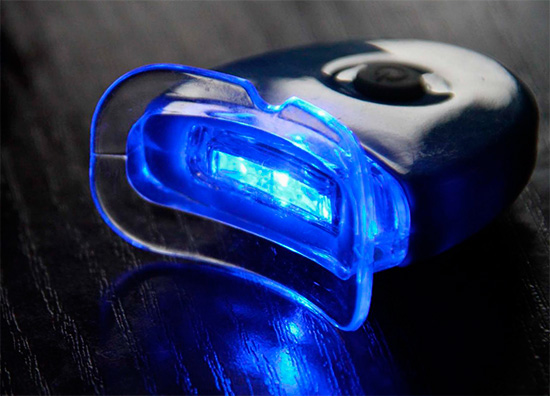
What can happen to the enamel when trying to whiten your teeth yourself?
There are many methods and tools used for teeth whitening at home, but the use of most of them is not complete without damage to the enamel.
Depending on the independent methods of bleaching used, the nature of the violations and their severity may be different. Consider two options:
- Bleaching with peroxide compounds (gels, sticks, strips and caps with compositions based on hydrogen peroxide, carbamide peroxide, sodium perborate, etc.);
- Bleaching associated with the use of abrasive compounds (bleaching paste, charcoal, white clay, ash, chalk, tooth powder, etc.)
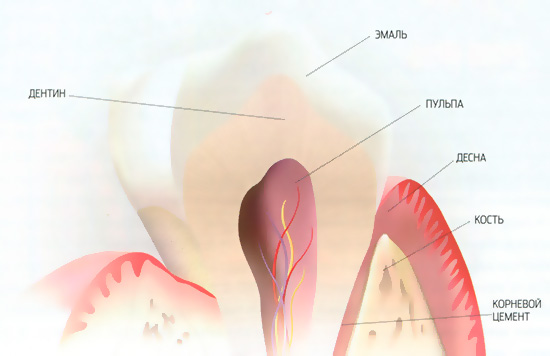
Scientists who conducted a study on the effect of hydrogen peroxide on the structure of enamel, came to the conclusion that even 10-16% concentration can lead to significant negative changes in its structure, up to a strong decrease in its hardness. This is especially true of whitening gels having a low pH.
Reducing the hardness of enamel occurs due to the rapid loss of its mineral components - primarily calcium and phosphorus.This means that the indicators of wear resistance of enamel, as well as resistance to fracture, decrease, the enamel becomes porous. Its natural protective functions are drastically reduced, it becomes more cariously susceptible.
In addition, freshly whitened enamel due to its increased porosity is more susceptible to re-staining with staining food. Therefore, after the procedure of both desk and home teeth whitening, it is recommended to adhere to the so-called “white” diet - do not use coffee, tea, red wine, etc. for some time.
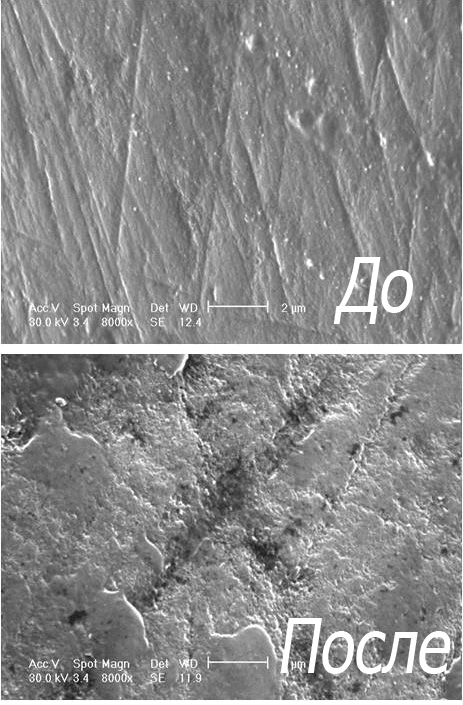
On a note
In addition to the harmful effects on tooth enamel, chemical components in whitening strips, pencils and caps can also have a certain effect on dentin and tooth pulp, especially in the presence of old fillings. If such a composition flows under the seal, and the person, despite the severe pain, will tolerate, then the pulp may well be damaged, followed by the development of pulpitis.
Certain harm enamel is applied when using abrasives.
In the process of teeth whitening with highly abrasive whitening toothpastes or toothbrushes with hard or modified bristles, mechanical enamel abrasion occurs along with the coating.In other words, with long-term uncontrolled use of abrasives, especially with a violation of the technique of proper teeth cleaning, there is a pathological loss of enamel.

On a note
Normally, a person has a natural loss of enamel every day, but this process is largely compensated by the return of mineral components from saliva back into the structure of enamel (therefore, saliva is even called “liquid enamel”).
With the pathological abrasion of enamel due to whitening toothpastes and toothbrushes, a superficial violation of the structure can be seen literally in a matter of months. However, this negative effect of abrasive joints on the teeth can be felt much faster, as this results in hypersensitivity of the teeth and a feeling of “mouthwash”.
Simple ways to "whiten" your teeth for several hours without harm to enamel
If it is not possible (or no time) to whiten your teeth either at the dentist or at home, and it takes a few hours to create the effect of white teeth, then using only lipstick and shine, you can create a Hollywood smile like enamel Marlene Dietrich or Marilyn Monroe.
The fact is that bright red lipstick on the background of a bright face makes the teeth noticeably whiter due to the contrast. Berry colors (crimson, grape, cherry shade) look great if they are well suited to many types of face and skin.
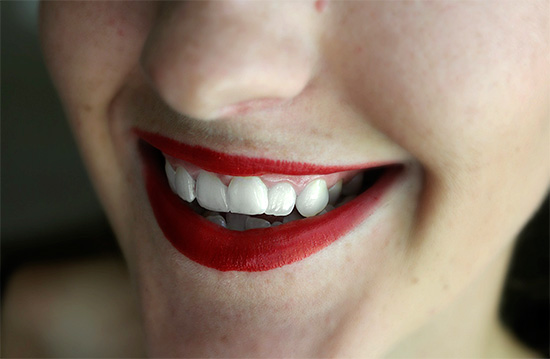
If you want to make the whiteness of your teeth more spectacular, then a lipstick with a flapper effect can be used. Plampers are such lipstick and gloss, allowing for a short time to increase the lips without injections, but their other side effect is a visual improvement in the color perception of the teeth.
However, there are also lipsticks, which not only do not improve the color characteristics of teeth, but if they wish, they can even spoil their native snow-white smile. Such lipstick pests a little, but they are. These are all shades of yellowish undertones, as well as:
- Carrot orange;
- Crimson;
- Purple and lilac;
- Brown;
- Coral;
- Pink.
Harmful and safe for enamel folk ways to lighten teeth
Let's start with the most dangerous folk methods of teeth whitening, which can cause enamel significant harm, especially with unreasonable use:
- Baking soda (sodium bicarbonate).It would seem, and what is so dangerous in it? However, soda is a strong abrasive that literally scratches the tooth enamel, leading to microdamages and sometimes even cracks. If there is a desire to cause harm to the enamel, it is enough to apply soda powder to the toothbrush and, in the usual way, to carry out long-term cleaning of the teeth twice a day for a month. As a result, the teeth will become light, but noticeably spoiled.
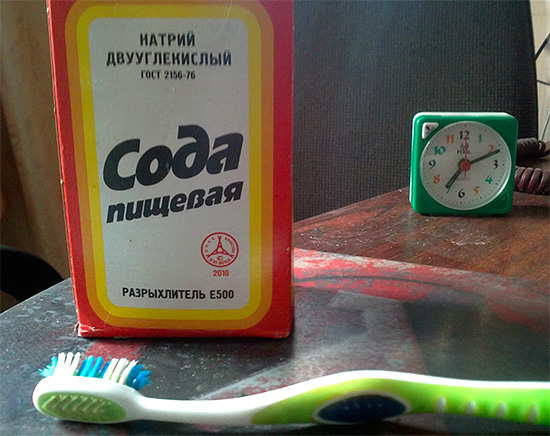
- White clay is significantly more abrasive than soda. Used in some bleaching products. toothpastes from Thailand. So you need to use such pastes very, very carefully.
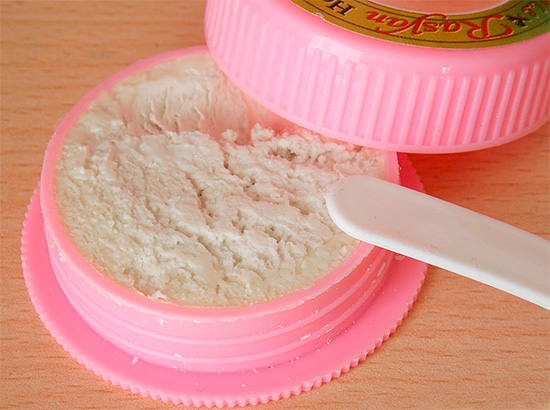
- Activated carbon (or just charcoal). In the old days it was a good way to clean the teeth from plaque and even slightly knock off the supragingival tartar, but at that time they ate mostly coarse food and did not know what high-quality culinary products were. Modern society, due to heat treatment and an abundance of "soft" products, has a characteristic weakly mineralized and not very strong enamel. Therefore, cleaning the teeth with charcoal can scratch the enamel and lead straight to the chair to the dentist.However, properly prepared (finely dispersed) charcoal is quite suitable for use and is even included in some toothpastes (an example of toothpaste with charcoal is Splat Blackwood).
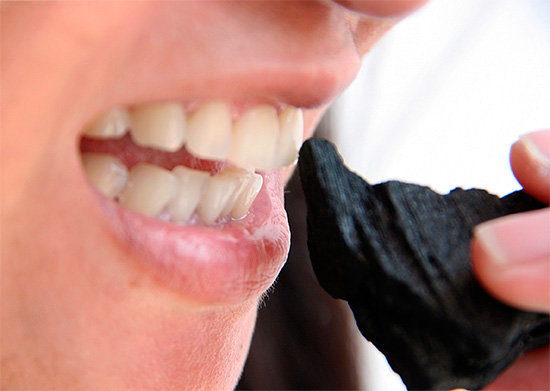
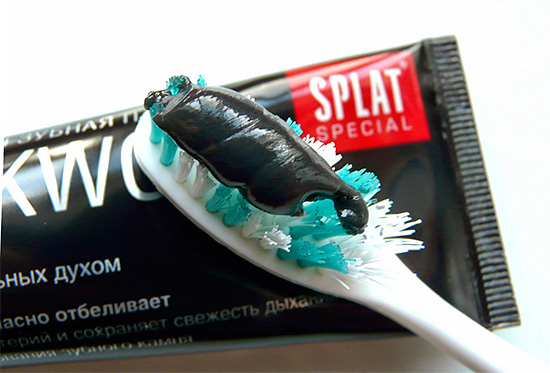
- Hydrogen peroxide in the form of gargles. This method still puzzles practitioners: as a means for professional use, so freely penetrated into traditional medicine? 3% hydrogen peroxide can cause severe burns of the mucous membranes and allergies. It is one of the strongest oxidizers, therefore it is simply dangerous for health to take it into the mouth and rinse before the foam appears, as sometimes especially advanced craftsmen try to do.
Relatively safe folk methods of teeth whitening without enamel damage:
- Eating apples. This method does not have strong whitening properties, but it is quite capable of brightening a smile a little, especially with abundant plaque and stone. Organic acids that are part of apple juice are very effective complexing agents, and are able to "pull" calcium ions from the matrix of tartar and the structure of hard and soft plaque, contributing to its desorption from the enamel surface.
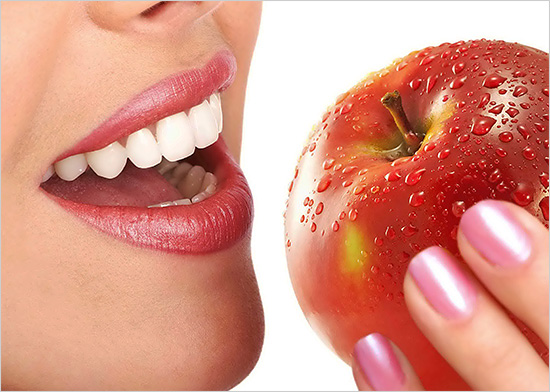
- Baking soda hydrated with lemon juice with the addition of a few drops of 3% hydrogen peroxide (Neumyvakin teeth whitening method). The interaction of citric acid and soda produces sodium citrate, which is able to flush calcium from tartar. But the whitening effect of hydrogen peroxide will be negligible because of its low concentration, but with this approach, there will be no harm from it either.
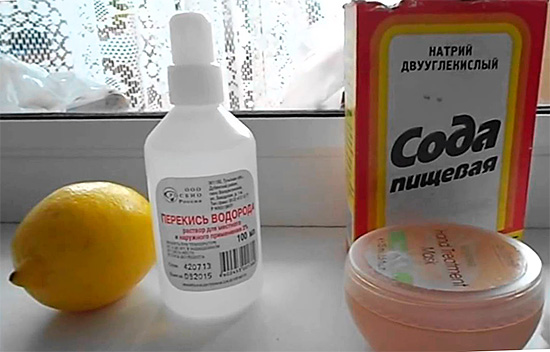
It is important to know
But what you should not do categorically - so rub your teeth with soda after you have previously eaten a lemon. With prolonged use of this method of teeth whitening, this will lead not only to the increased sensitivity of enamel, but also to its erosion.
Teeth whitening, absolutely safe for enamel: myth or reality?
Upon closer examination, it turns out that it is effective and absolutely teeth whitening safe for enamel does not exist.
Well, unless that absolutely safe method of visual clarification of teeth is available to women. An experiment with lipstick with the appropriate type of face and skin color almost always ends in success: the teeth for others are really whiter.And this is without any conscious damage to the tooth enamel.
However, there are methods of controlled home teeth whitening that are quite sparing with respect to enamel. Many experts believe that the least risk of a serious violation of the structure of the enamel and the development of inflammatory processes of the gums is achieved by home teeth whitening with a cap, made in the office at the dentist according to the impression.
In this case, the dentist issues a set of special gels with detailed instructions for home bleaching. Therefore, the gel, made on such an individual cap, is precisely on the teeth and precisely the time that is regulated for a particular person.
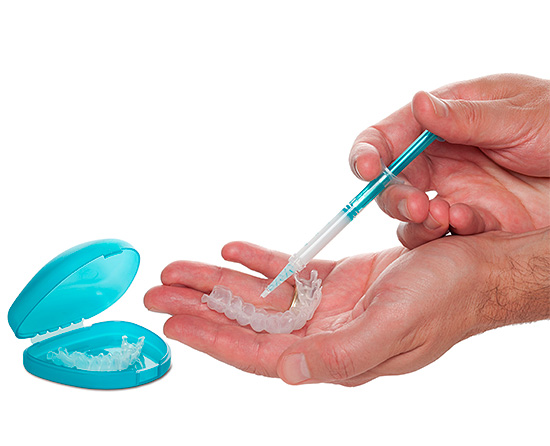
With controlled home teeth whitening, the concentration of hydrogen peroxide in the gel is significantly lower than in professional whitening systems. However, more procedures are required. The effect of this type of bleaching may not come immediately: after 5-7 days of use, but it is as resistant as after the desk bleaching, and the procedure itself is safer for enamel.
Whatever method of teeth whitening at home you choose, there is an important nuancewhich you should not forget: if you do some damage to the enamel with peroxide or abrasive paste, then it is highly desirable to somehow compensate for this harm. Than? Mineral gels and pastes - that is, a course of bleaching is desirable to combine with the use of such funds.
An example is ROCS Medical Minerals, Recaldent GS Tooth Mousse remineralizing gels, etc. In extreme cases, low-abrasive toothpaste with sodium fluoride, aminofluoride, calcium glycerophosphate, calcium citrate, calcium lactate, finely dispersed hydroxyapatite, and other mineralizing components is suitable.
Choose only proven and safe methods of teeth whitening and do not forget to visit the dentist for a consultation if you are not sure of your actions.
Be healthy!
Interesting video: 5 ways to whiten your teeth at home
On modern approaches to teeth whitening at the dentist

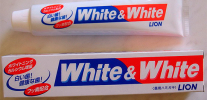
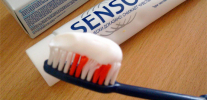

I want to whiten my teeth, how can I do it?
Hello! Consult your dentist for advice directly in the chair, as:
1. Bleaching may not be possible in all clinical cases (for example, it is not safe to whiten all teeth);
2. Professional methods (at the doctor) are the most effective and safe (you do not want to spoil your enamel).
I would not like you to experiment with your teeth, as it is sometimes extremely difficult to restore the enamel (sometimes it is impossible without therapeutic treatment of teeth).